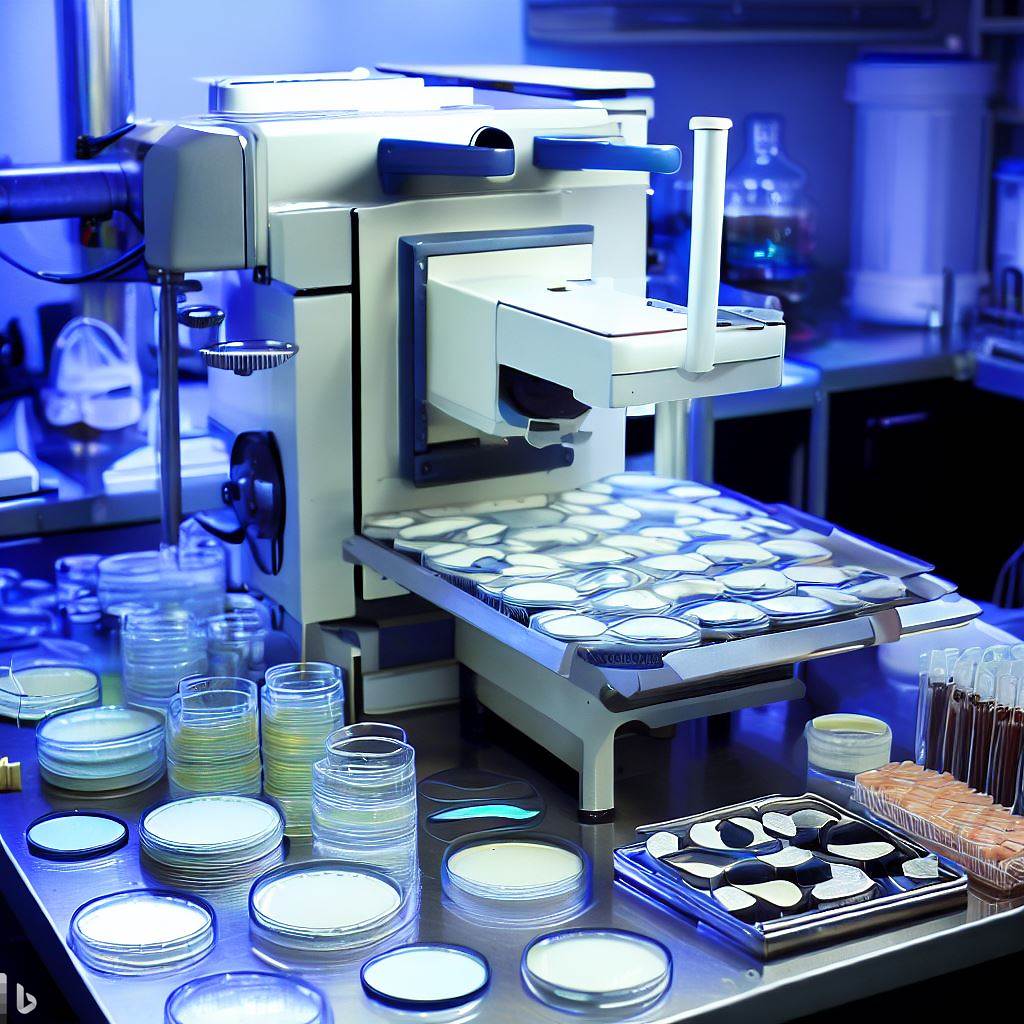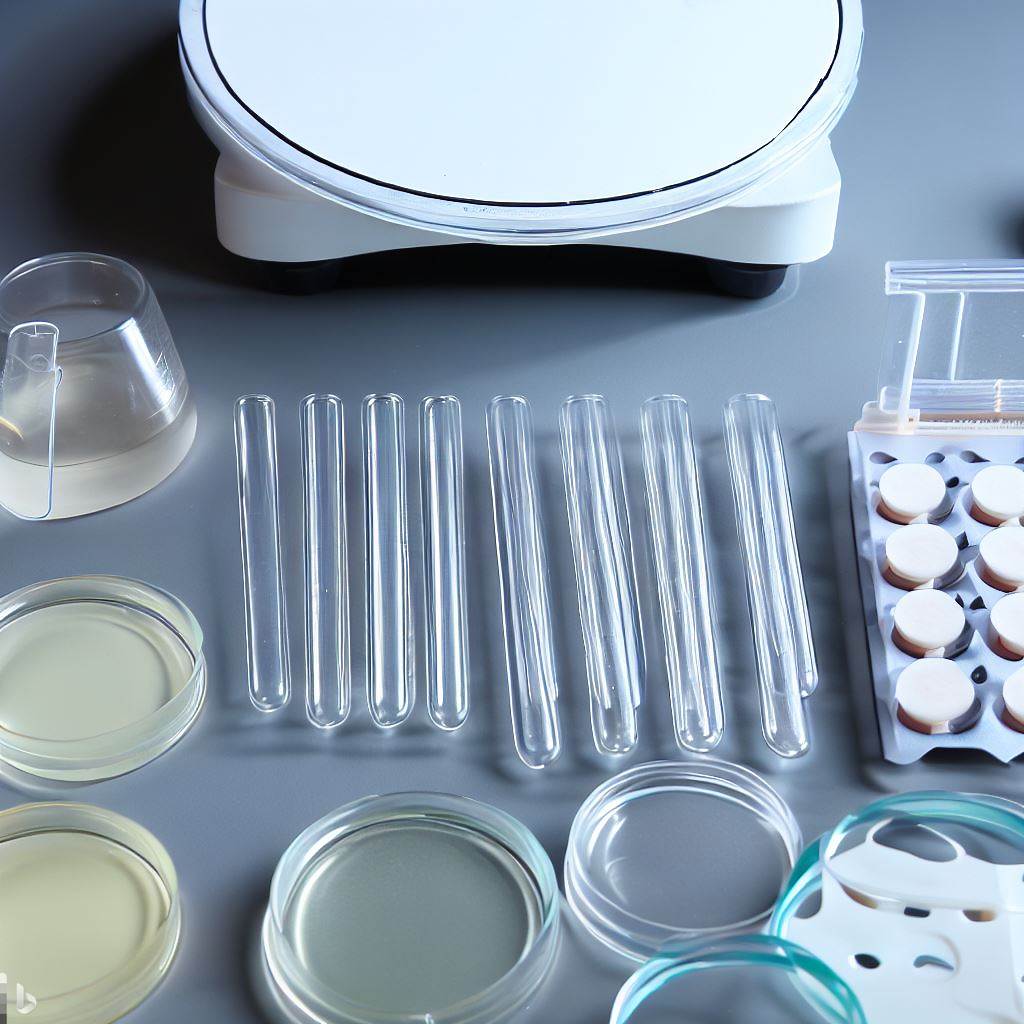Venturing into the realm of phage research opens up a world of microscopic wonders. To embark on this exciting journey, you’ll need a well-equipped phage laboratory. In this article, we’ll walk you through the essential equipment required at each stage of the phage research process, unraveling the mysteries of these bacterial viruses and making the equipment itself captivating to explore.
Equipment and Materials for Key Phage Research Steps
Sample collection:
During the collection of environmental samples for phage research, it is important to have the following materials and equipment on hand:
- Sterile Swabs or Sampling Tools: These can include cotton swabs, polyester-tipped swabs, or specialized environmental swabs designed for sample collection. Ensure they are individually packaged and sterile to prevent contamination.
- Collection Containers: Sterile containers, such as tubes or vials, are needed to store the collected samples. Choose containers that are leak-proof, airtight, and resistant to any chemicals or substances present in the sample.
- Gloves: Disposable gloves made of nitrile or latex should be worn during sample collection to prevent contamination and protect the sample collector from any potentially hazardous materials.
- Labels and Permanent Markers: Clearly label each collection container with important information, such as the sample location, date, and any specific identifiers. Permanent markers are recommended to ensure the labels do not fade or smudge.
- Coolers or Insulated Bags: If the samples require cold storage, use coolers or insulated bags with ice packs or dry ice to maintain the appropriate temperature during transportation to the laboratory.
- Personal Protective Equipment (PPE): Depending on the nature of the sample and the potential hazards involved, additional PPE may be necessary, such as lab coats, safety goggles, masks, or respirators. Adhere to safety guidelines and regulations when handling potentially harmful samples.
- GPS or Location Recording Device: If precise location data is important for your research, consider using a GPS device or a smartphone with GPS capabilities to record the coordinates of each sample collection site accurately.
- Field Notebook or Data Sheets: Document relevant information about the sample collection process, including sample locations, collection methods, environmental conditions, and any visual observations. This ensures accurate and organized data collection for later analysis.
Collection Tools (Optional): Depending on the sample type and research objectives, additional tools such as spatulas, trowels, or collection nets may be required for specific sampling techniques. Consider the unique requirements of your study and gather any necessary specialized tools accordingly. You can read in depth on procedure of sample collection for phage isolation here
The phage
Cultivation:
When it comes to cultivating phages in the laboratory, several key pieces of equipment and materials are required. Here is a list of the essential items for phage cultivation:
- Bacterial Host Cultures: Specific strains of bacteria susceptible to phage infection are necessary for phage cultivation. Choose bacterial strains that are compatible with the phages you are working with.
- Culture Media: Nutrient-rich media are needed to support the growth of bacterial host cultures. Commonly used media include agar plates, liquid broths (e.g., Luria-Bertani/LB broth), and specialized media tailored to specific bacteria or phage requirements.
- Incubator: An incubator provides a controlled environment for bacterial and phage growth. It maintains optimal temperature (usually around 37°C for most bacteria) and may include features such as adjustable humidity and atmospheric conditions.
- Shaking Incubator: A shaking incubator combines controlled temperature with continuous agitation, providing a dynamic growth environment for bacterial host cultures and ensuring thorough mixing with phages during infection.
- Petri Dishes and Culture Tubes: Petri dishes with solid agar media are used for bacterial colony growth and phage plaque formation. Additionally, culture tubes are utilized for liquid bacterial cultures.
- Pipettes and Pipette Tips: These are indispensable for accurate and precise liquid handling during the transfer of bacterial cultures, phage stocks, and media.
- Centrifuge: A centrifuge is required for pelleting bacterial cells, separating bacterial cells from liquid cultures, and concentrating phage particles. Different types of centrifuges (e.g., benchtop or refrigerated) may be used depending on the specific needs of the experiment.
- Laminar Flow Hood or Biological Safety Cabinet: These sterile workspaces provide a controlled environment to prevent contamination during culture preparation, media pouring, and inoculation procedures. They help maintain aseptic conditions and protect the experimenter and cultures.
- Spectrophotometer: This instrument is used to measure the optical density of bacterial cultures. It provides information about bacterial growth and helps determine the appropriate timing for phage infection.
- Refrigerator: A standard refrigerator is necessary for the short-term storage of bacterial cultures, phage stocks, and media components.
- Autoclave: An autoclave is used to sterilize culture media, equipment, and materials by subjecting them to high-pressure steam. It ensures the elimination of unwanted microorganisms and promotes a sterile working environment.
- pH Meter: To monitor and adjust the pH of the culture media, a pH meter is necessary. Proper pH conditions are crucial for optimal bacterial growth and phage infection.
- Refrigerated Storage (e.g., -80°C Freezer): Ultra-low-temperature storage is required for long-term preservation of bacterial strains, phage stocks, and other sensitive materials.
- Safety Equipment: Personal protective equipment (PPE), such as lab coats, gloves, and safety goggles, should always be worn when working with bacteria and phages to prevent contamination and ensure the experimenter’s safety.
Remember to follow proper aseptic techniques, maintain sterile conditions, and adhere to institutional safety guidelines while working in the phage cultivation laboratory.
The phage
Characterization:
Physical Characterization
Phage physical characterization involves studying the physical properties and structure of phages. The following equipment and materials are commonly used for this purpose:
- Electron Microscope: An electron microscope, such as a transmission electron microscope (TEM) or scanning electron microscope (SEM), provides high-resolution imaging of phage particles. It allows researchers to examine the size, shape, and structural details of phages.
- Sample Preparation Tools: This includes tools like carbon-coated grids, negative staining reagents, and fixatives, which are used to prepare phage samples for electron microscopy.
- Ultracentrifuge: An ultracentrifuge is used to concentrate phage particles and separate them from debris or contaminants based on their density. It enables the isolation of highly purified phage samples.
Genomic Characterization
Genomic characterization involves analyzing the genetic material of phages to understand their genetic makeup, diversity, and functional elements. The following equipment and materials are commonly used for phage genomic characterization:
- PCR Machine: A PCR machine is crucial for amplifying specific regions of phage DNA, such as conserved genes or genomic fragments of interest.
- DNA Extraction Kits: These kits provide reagents and protocols for extracting phage DNA from purified phage samples. They ensure efficient DNA extraction for downstream genomic analyses.
- Gel Electrophoresis Setup: Gel electrophoresis is used to visualize and analyze PCR-amplified DNA fragments. It helps determine the presence, size, and purity of specific DNA regions in the phage genome.
- DNA Sequencing Services: DNA sequencing services, either in-house or through external providers, are used to obtain the complete sequence of a phage genome. This includes technologies such as Sanger sequencing or next-generation sequencing (NGS).
- Bioinformatics Tools: Phage genomic characterization often involves bioinformatics tools and software for genome assembly, annotation, and comparative genomics. These tools aid in identifying genes, determining gene function, and comparing phages to existing databases.
- Computational Resources: Phage genome analysis may require access to high-performance computing clusters or cloud-based resources for efficient data analysis and storage.
- Genome Visualization Tools: Software tools specialized for genome visualization help researchers interpret and analyze the genomic features, gene arrangement, and structural elements of phages.
Remember, the specific techniques and equipment used for physical and genomic characterization may vary depending on the research goals and available resources. It’s important to consult established protocols and adapt your equipment and materials accordingly for a comprehensive phage characterization process.
The phage
Storage:
To store phages effectively, you will need the following equipment and materials:
- -80°C Freezer: A freezer capable of maintaining temperatures below -80°C is essential for long-term storage of phage hosts. This ultra-low temperature helps preserve bacteria isolates over extended periods.
- Refrigerators (4-8°C): A refrigerator with low temperatures is required for long-term phage storage. This temperature aids in the preservation of phage infectivity and viability over long periods of time.
- Cryogenic Storage Tubes: These specialized tubes are designed for long-term storage of biological samples at low temperatures. They are resistant to extreme temperatures and are typically made of materials such as polypropylene or polyethylene.
- Cryogenic Boxes or Racks: These storage containers are used to organize and protect cryogenic storage tubes. They help maintain sample integrity and prevent damage or cross-contamination during storage. The boxes or racks should be labeled and easily accessible for efficient sample retrieval.
- Cryoprotective Agents: Certain phage samples may require the addition of cryoprotective agents to enhance their stability during freezing and thawing. Common cryoprotectants include glycerol or skimmed milk, which help minimize damage caused by ice crystal formation.
- Sterile Pipettes and Tips: These are used for aliquoting and transferring phage samples into cryogenic tubes without introducing contaminants. It is crucial to use sterile equipment to maintain sample purity.
- Parafilm or Cryogenic Tape: These materials are used to seal the cryogenic storage tubes tightly, ensuring an airtight and secure closure. This helps prevent sample degradation and maintains the integrity of the stored phages.
- Barcode Labels: Properly labeled cryogenic tubes with unique identifiers, such as barcodes or alphanumeric codes, facilitate accurate sample tracking and retrieval. Barcode labels ensure efficient organization and minimize the risk of misidentification.
- Inventory Management System: Implementing an electronic or manual inventory management system helps track and monitor phage samples, including details such as storage location, date of storage, and relevant metadata. This ensures efficient sample retrieval and reduces the risk of sample loss or misplacement.
Remember, when handling and storing phages, it is essential to follow biosafety protocols and adhere to local regulations to ensure the safety of researchers and the integrity of the stored samples.
The phage
An alternative way to acquire Equipment:
For aspiring phage researchers on a limited budget, collaboration, and shared resources can be a valuable alternative. Many universities and research institutions offer shared core facilities where scientists can access the required equipment. Collaborative research projects with established phage laboratories can also provide opportunities to share resources and gain access to specialized equipment.
From the excitement of phage discovery to the revelation of their genetic secrets, equipping your phage laboratory with the right tools is essential. With equipment ranging from swabs and agar plates for isolation to microscopes and centrifuges for visualization and purification, you’ll be fully equipped to explore the captivating world of phages. Remember, the equipment serves as your trusty allies, unraveling the hidden mysteries and paving the way for groundbreaking phage research.




